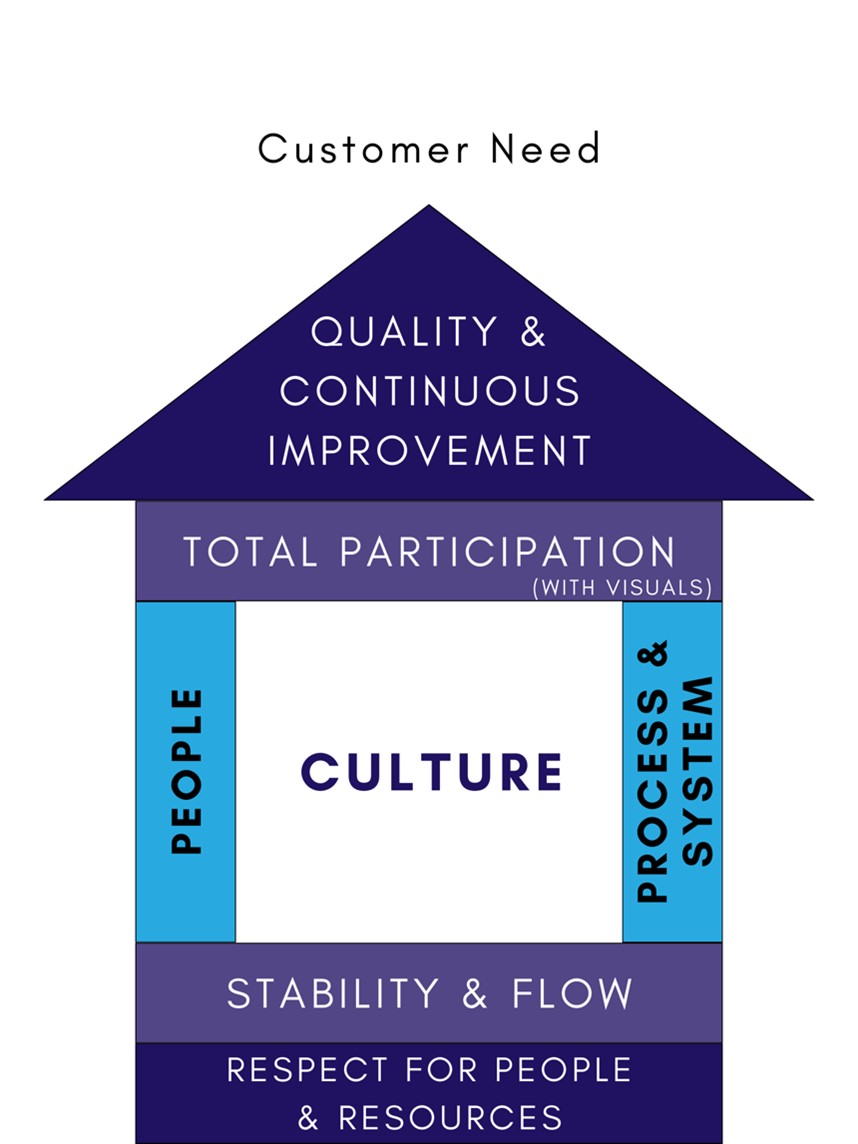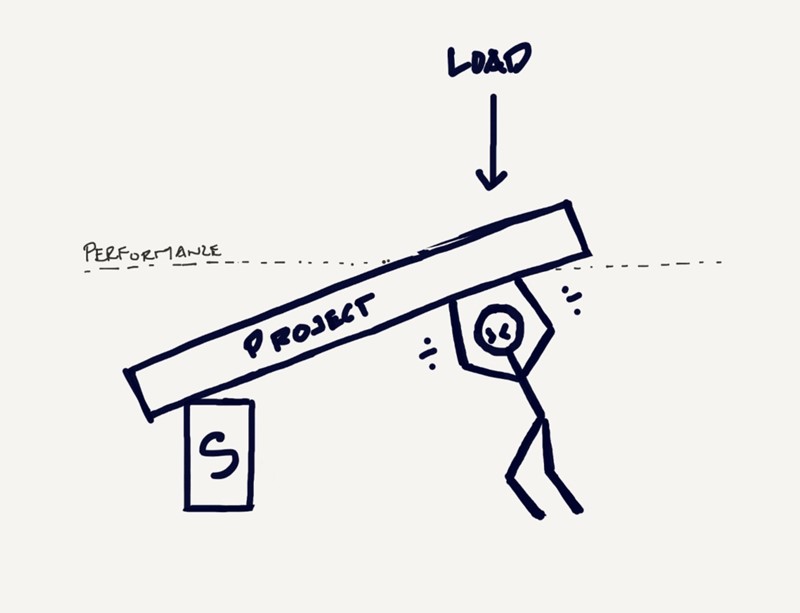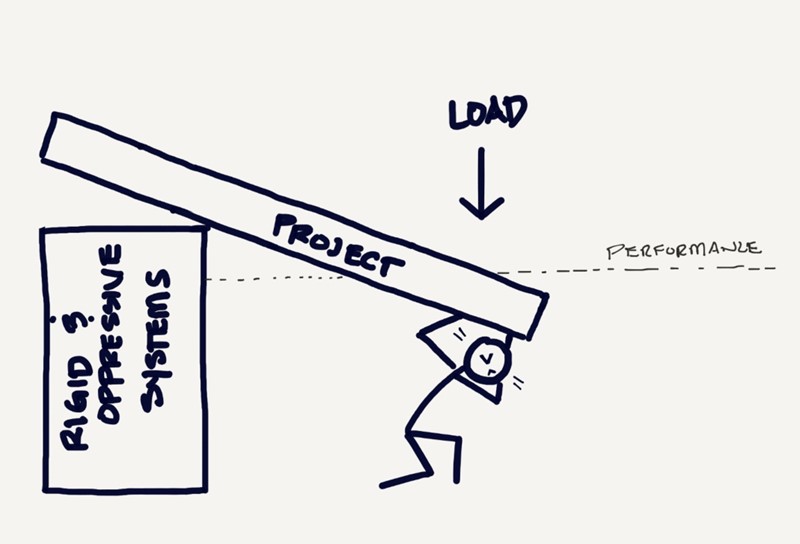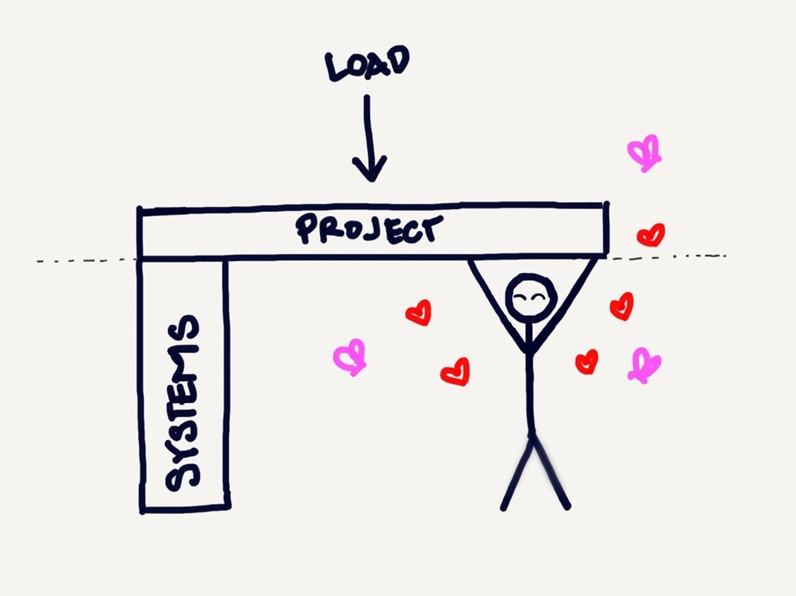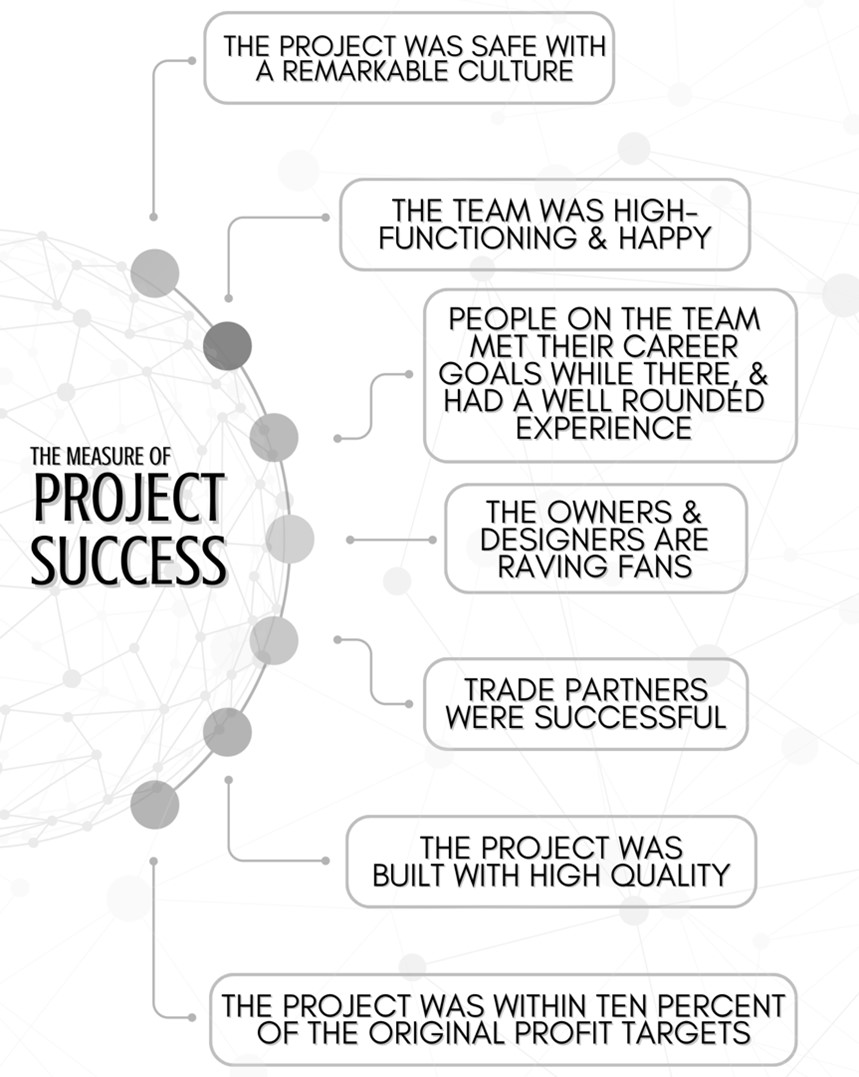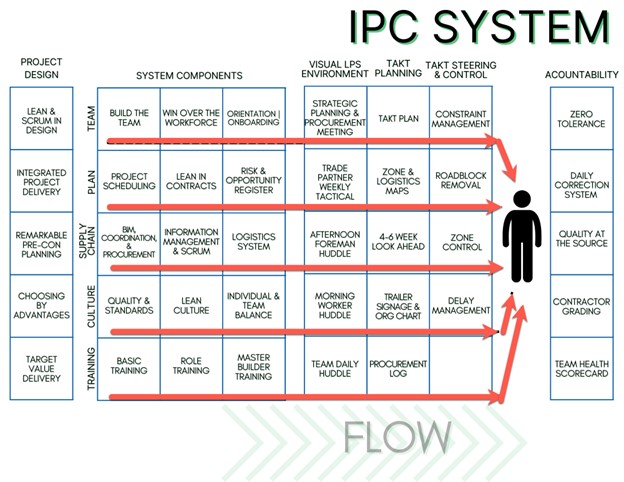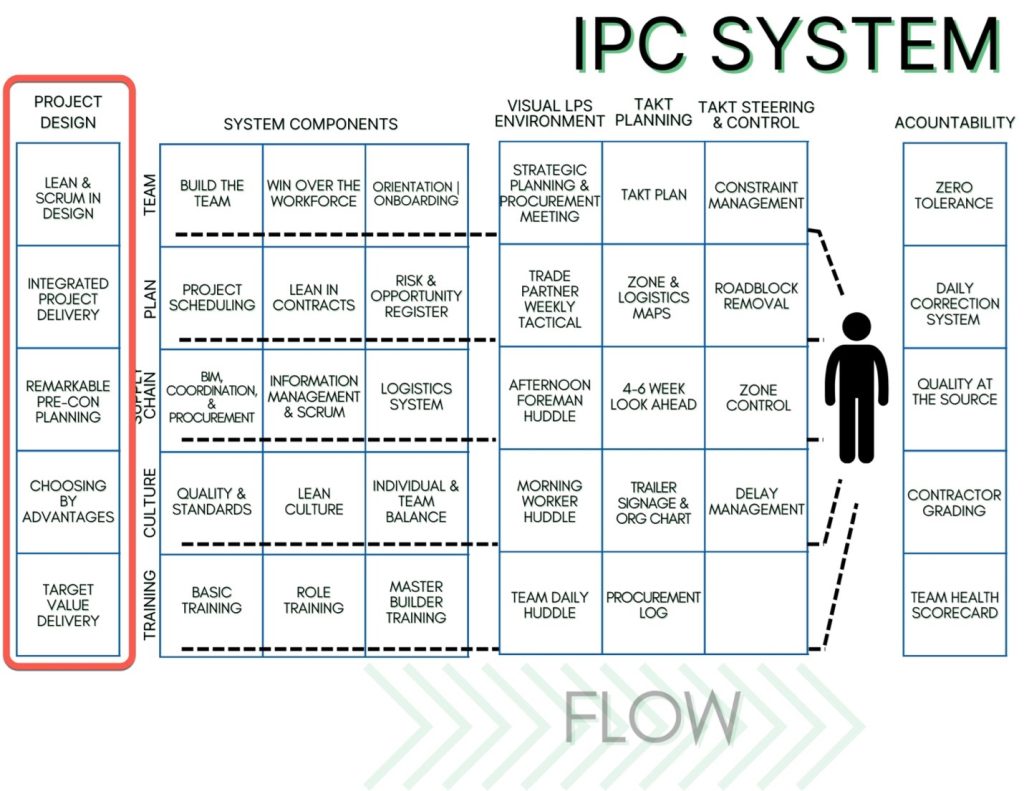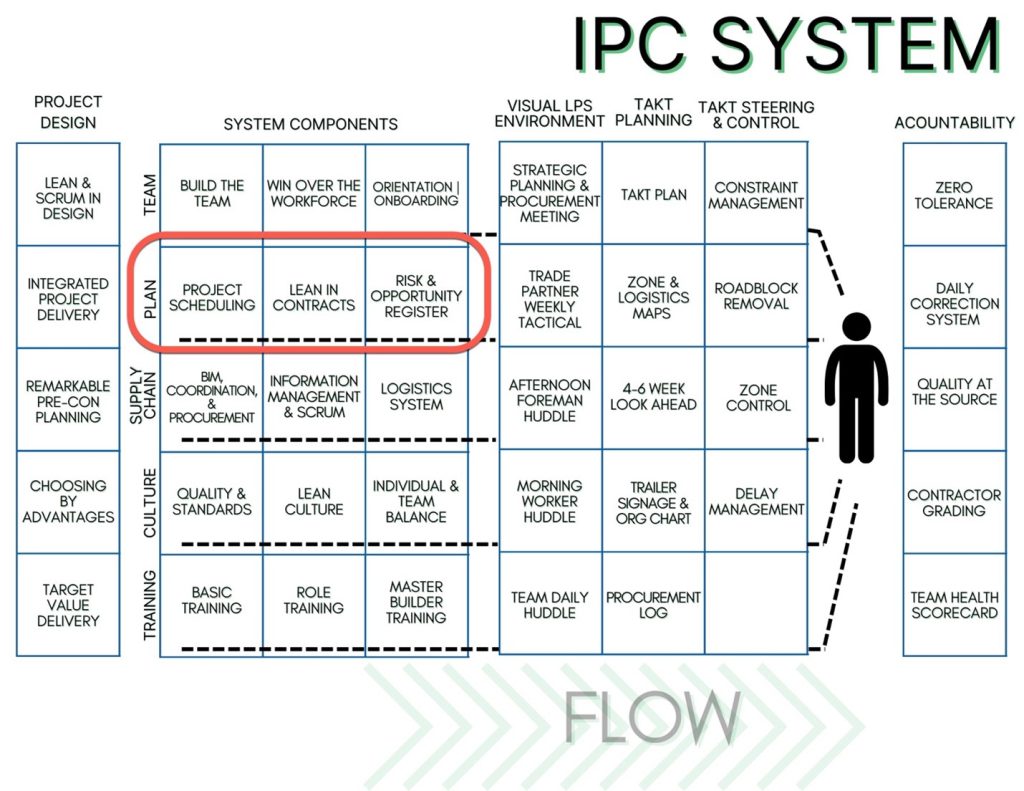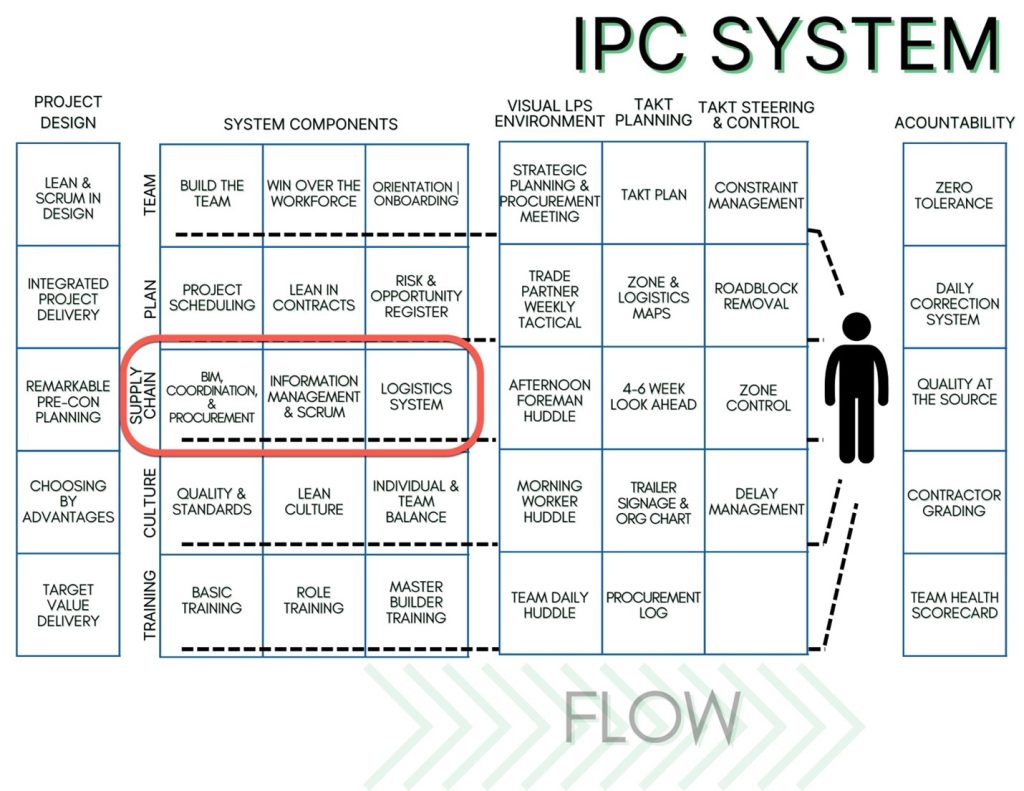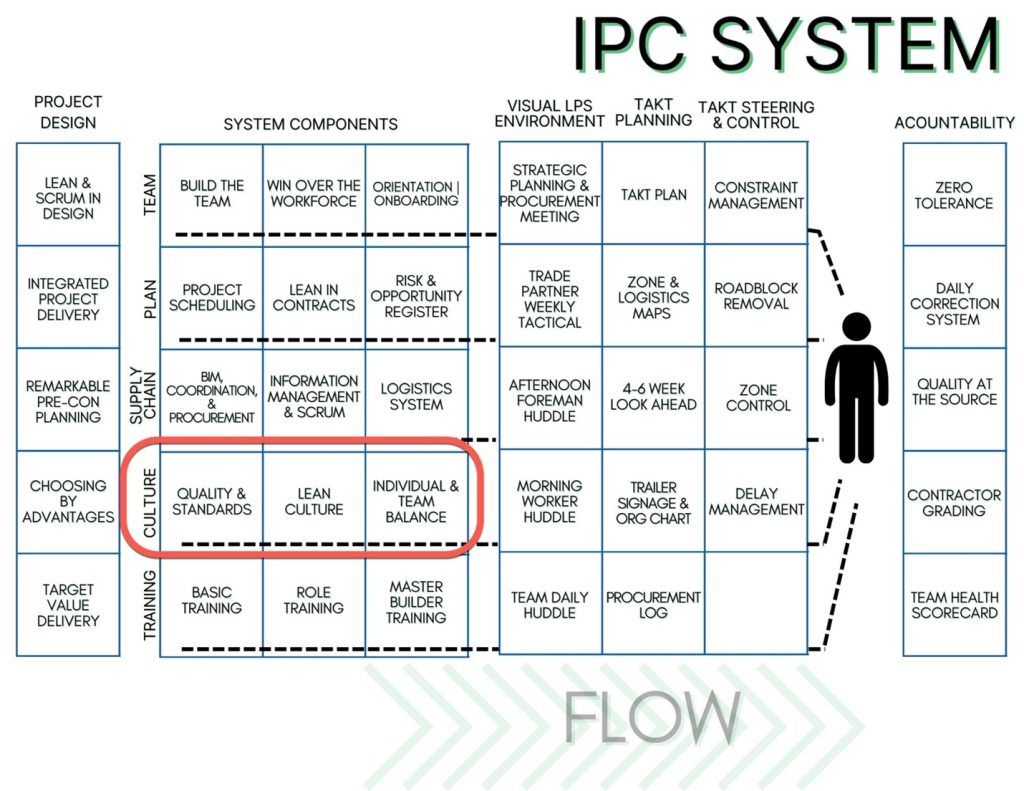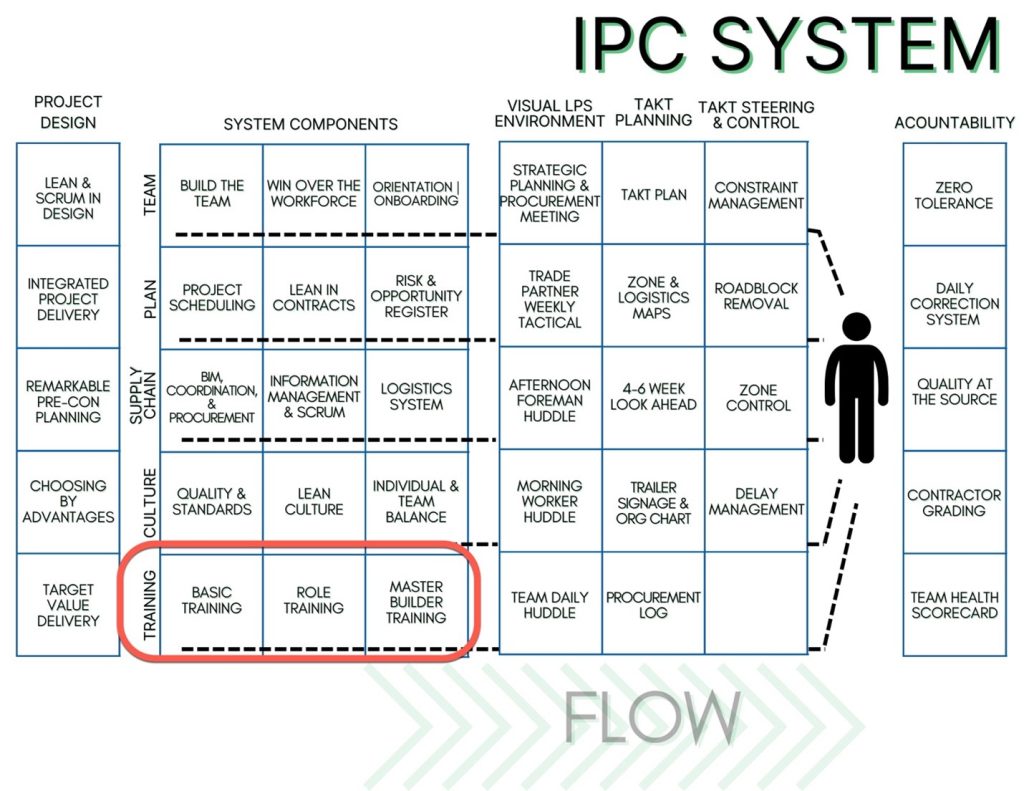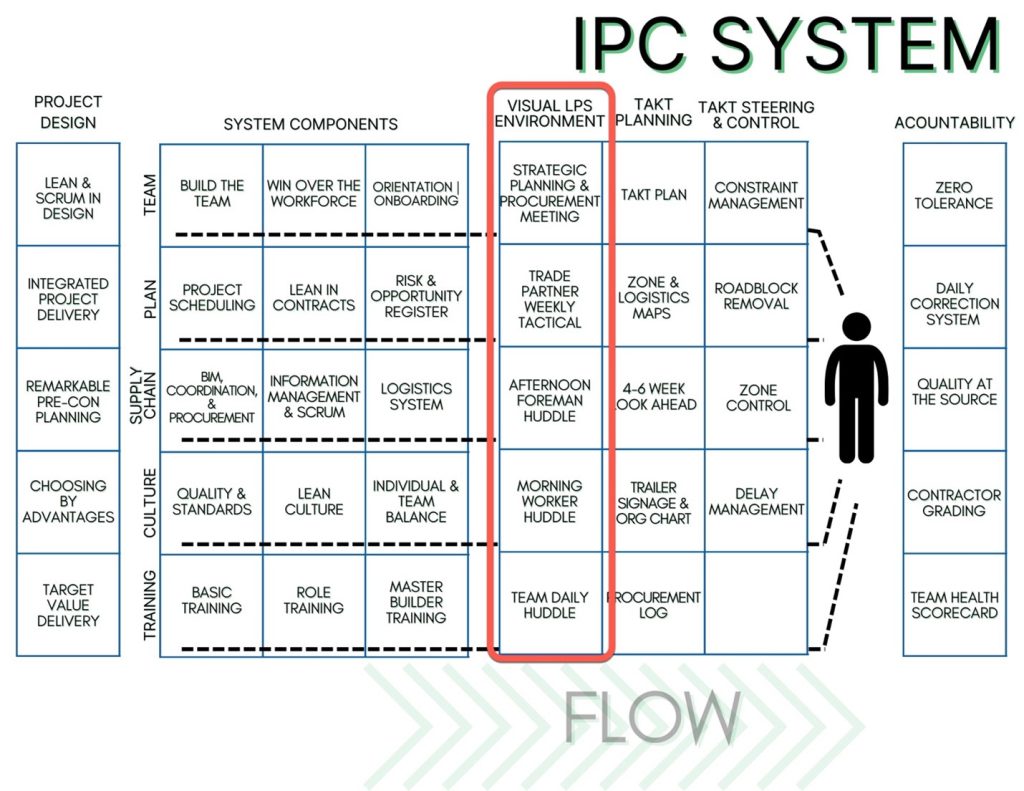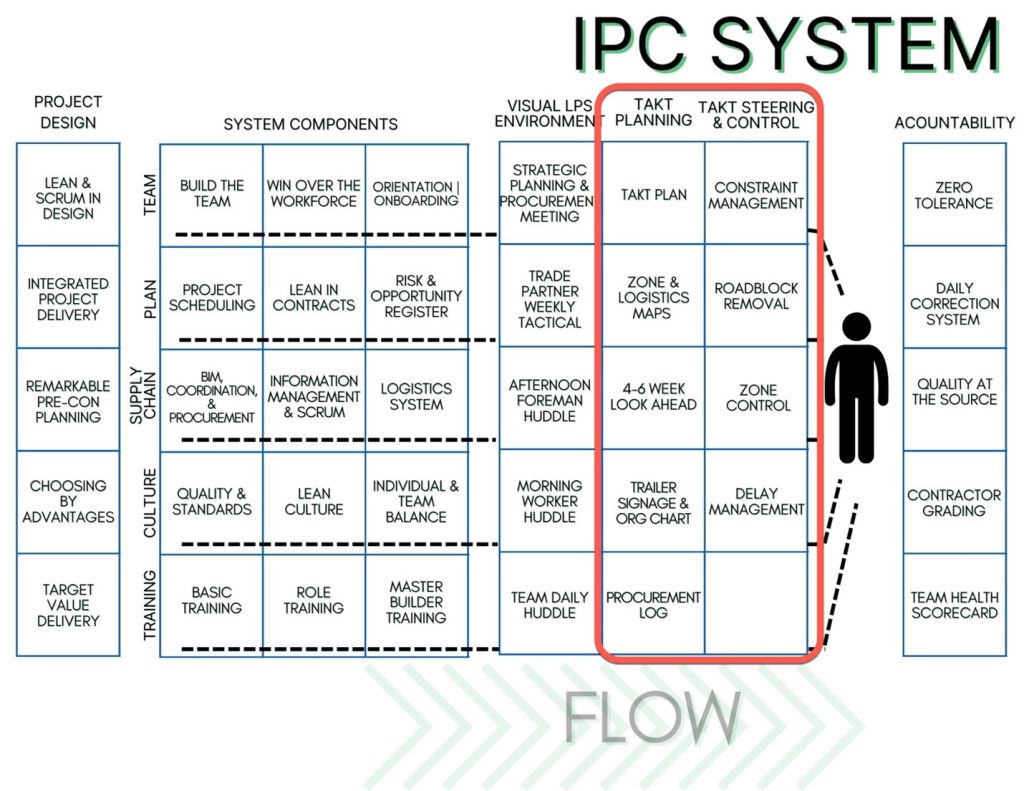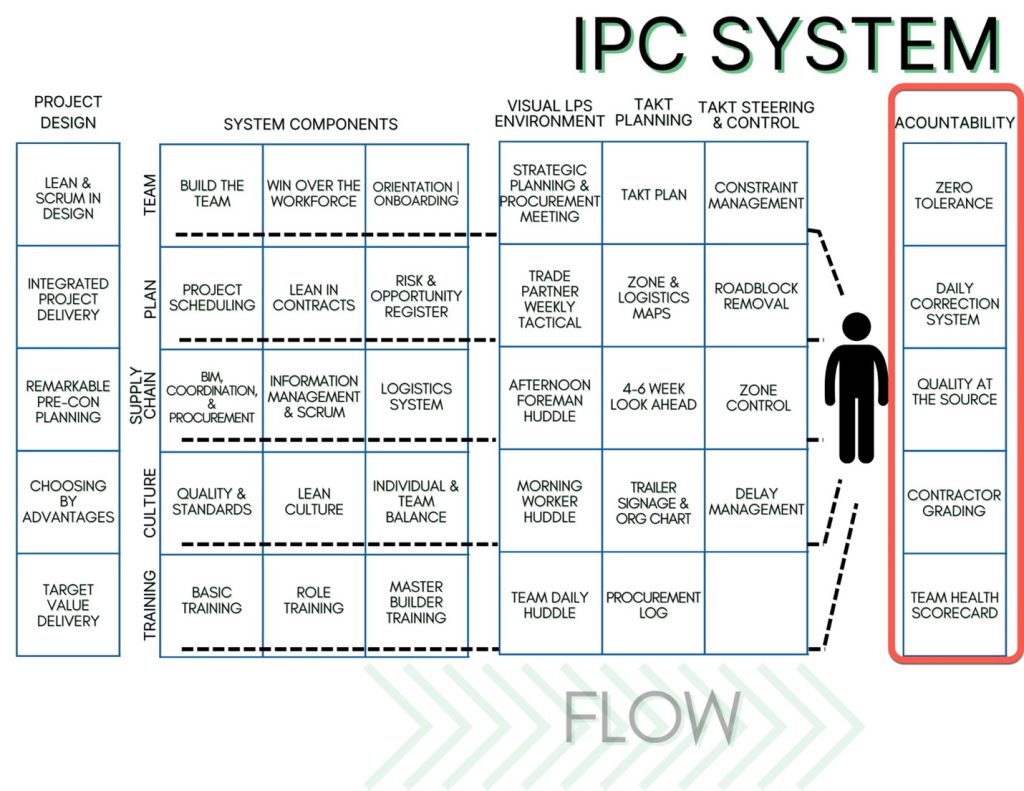The industry has been doing a great job of talking about Lean philosophy, tools, and concepts centering around people. I love it. It has literally changed my life and my career.
One of the best moments of my career was when I was taught to see the application of Lean as a system. A shout-out goes out to Hal Macomber and Adam Hoots for their introduction to systems thinking. I have been intrigued by books they recommend, like The Fifth Discipline by Peter Senge and Thinking in Systems by Donnella Meadows. Although the authors warn about an overconfidence in being able to map out complex systems, I believe beginning to look at the application of Lean as a system will take us to the next step as we learn to expand our thinking.
Here is what I mean: Processes and systems like Target Value Delivery, The Last Planner System®, The Takt Production System®, and Scrum are not options best to be chosen in a silo—they work best together. Lean tools, concepts, and processes can be applied individually and show some progress, but the measure of a successful project will only be reached when we apply them as a system. So, let me explain what I mean.
First, I want to set us up a bit before going into the system. My first realization is that there is no real fight between people and process or people and systems. We need them both. The “House of Lean”, regardless of which version you use, will usually show up with people on one side and process or systems on the other.
The trick is not to pit these two against each other, but to balance them.
As you can see in this sketch, if the project delivery system is underdeveloped it will put an undesirable burden on the people in the project.
If the project or company has overdeveloped and oppressive systems that overwork people, it will also shift the load and hurt people.
But if you have a balance between the two, you will have remarkable results. So, the question is this: how can we develop and implement a project delivery system that will deliver remarkable results? I am glad you asked….
Let’s implement Lean as a system.
Lean As a System
Let’s first look at an analogy. Think about an HVAC system. What if the condenser went out? What if the controls cabling is cut? What if you open all the doors and let all the outside air in all at once? What if the thermostat breaks? What happens to the system if these things happen? It goes down completely or at least operates sub-optimally. A construction project is the same way! All components must work well, or the project will fail, or at least work sub-optimally.
So, let me introduce you to the system I use. I do want to recognize that there are permutations of this and variations in the way you apply each component but let me be clear: I have never seen a remarkably run project without each component. I’ll pause right now to define what a remarkably run project is:
There are so many that say, “I finish jobs all the time without Lean. Why would I change?” The answer is that a Lean delivery or massively good luck is the only way to achieve all the key performance indicators as shown above. So, you must have the basics of this system when delivering a project. I call it the “Integrated Production Control System.” Integrated because we must have an integrated team to manage it. Production Control because it drives flow in the field and production at the foreman and worker level. And System because, again, it functions like a system. And just in case anyone is looking at my simplified sketch thinking, “Hey, that is a lot.” Here is my response: Building something with a mobile workforce, still mostly stick-built, in an economy of scarcity and panic, with new teams, no consistency, and in harsh physical conditions is just that complex. It just is what it is. Construction is a complex field.
Please take a minute to read all the bullet points on the graphic below. And please note the arrows. The project design, the project delivery system components, the Last Planner System, the Takt Production System, and all other efforts are designed to bring flow efficiency to the foremen. This is important to note because most organizations will silo between their departments, meaning department leaders will only focus on and optimize their department and make the flow of needed information, training, and supplies to the foremen slower. That is classical management theory. Lean management theory will optimize all departments in a company to provide value to the people working in the field who directly add value to the customer.
So, let’s begin. And please remember this is just an overview. This is not a detailed training course or book on the subject. We are detailing this entire system out in the second Elevating Construction Superintendents book coming out soon.
Project Design:
Every project wins with design and pre-construction. As Sun Tzu wrote in the immortal book, The Art of War: “Victorious warriors win first and then go to war, while defeated warriors go to war first and then seek to win.” At least 60% of the success of a project is decided in design and pre-construction—some would argue it is higher. Concepts like Lean design, Scrum in design, IPD, CBA, TVD, and solid practices like:
- The early creation of a macro-level Takt plan,
- Early trade partner involvement,
- Early procurement planning,
- Project plan development before reaching a prime agreement, and
- Hosting a risk review and fresh eyes meeting before breaking ground.
Are all key to a proper project design and preparation effort. So, it all starts with design and pre-construction. And it is key to the system. If we do not properly design and plan a project, or the owner uses a design-bid-build contract delivery method, the system will break down and will hurt the project team. At a minimum the project will not be delivered optimally.
The Team:
The second focus in this system is the creation of the team. No project can work properly unless we build the project team, win over the workforce, and provide them with remarkable conditions. And we must onboard people in a way that captures their hearts and minds. But, if we do this, and we should, the foremen will have the right support and the right onboarded people for her or his crew.
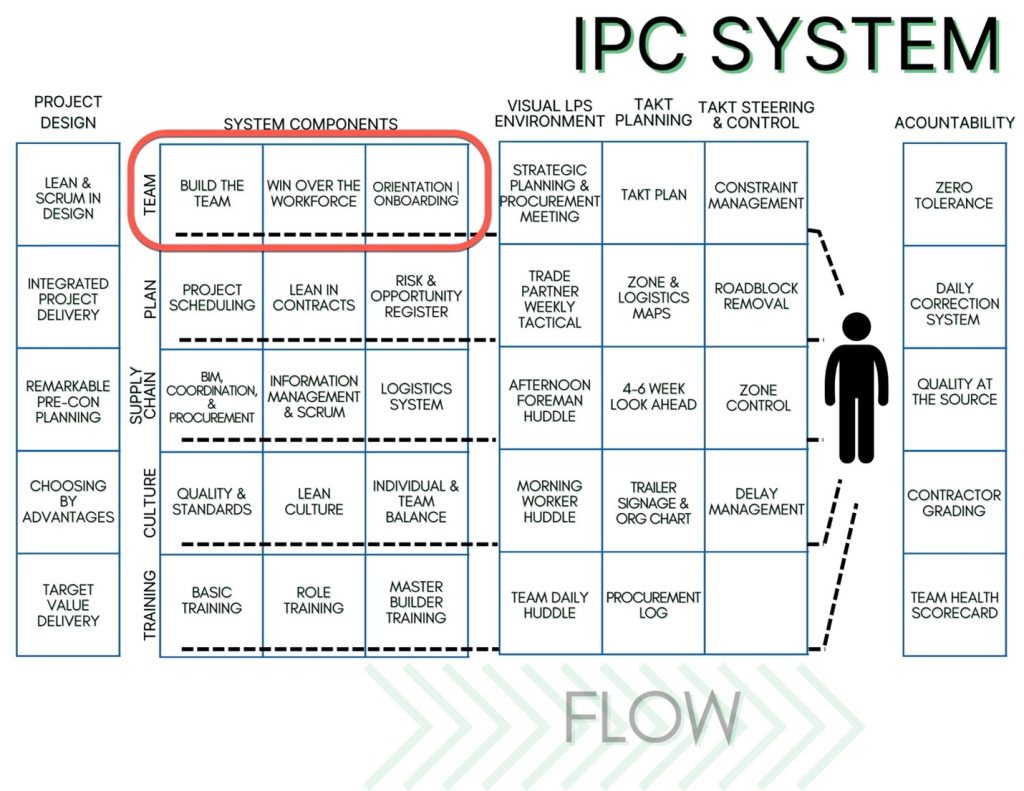 The Plan:
The Plan:
The third focus of this blog post is the development of the plan. Every foreman on the project with his or her crew needs a proper plan that they were a part of and have committed to. This is where involving the Last Planners and creating a collaborative and visual plan is crucial. Once that team plan is in place, we must contract everyone to it and consistently manage the risks and opportunities related to that plan. Please do not be fooled by common thought on this one—you must buy the behaviors you want. You must buy the schedule and Lean system you want. It has to be in the contract, and it has to be managed.
The Supply Chain:
The fourth focus of this blog post is the coordination, procurement, and delivery of materials, resources, and information to a project. I love the saying, “If you can get it here, we can build it.” Those words ring with truth. Our procurement must be properly managed, highly visible, and in line with a predictable and flowable schedule so they are ready for the last planners in the short interval.
The Project Culture:
The fifth focus of the system, but not fifth in order of sequence, is the culture of the project. What are the Conditions of Satisfaction? What mindset does the team have around things like safety, quality, and teaming? Is the team bought into a Lean delivery in an integrated way? And does the team have the capacity to maintain that culture? These are all questions that every project can ask to create and maintain their culture, which stated simply, is the definition and existence of commonly accepted beliefs and behaviors that are accepted by the social group. As Peter Drucker once said: “Culture will eat strategy for breakfast.” We must have a Lean culture on our project to implement Lean tools and care for people in a Lean way.
Training:
The sixth focus of the system is the training of everyone on site. We cannot expect 100% from people and only train them 1%. Training is needed at all levels throughout and project, and I would say daily. Projects that plan for this will achieve the goals of this system.
The Last Planner System:
All those component parts then come together in the Last Planner System process, deliverables, meetings, and visuals. Meaning, this information must come together and be discussed with the Last Planners in a collaborative way where true teaming can happen with the people that are boots on the ground.
The Takt Production System®:
All coordinated processes, deliveries, efforts, work, preparation, and milestones that are coordinated with Last Planners in their meetings, and visuals must align to the project rhythm and flow. Meaning all efforts cannot just happen by guessing, happenstance, or as soon as possible. They all get coordinated to a flow that respects trade partners, enables production, and shortens overall durations of projects. This can only happen with the Takt Production System. The efforts of the Last Planner System is wasted if it only leads to batching, pushing, guessing, mis-aligned procurement dates, and a lack of flow. Last Planner and Takt always go together.
And finally, while 60-70% of all persons on a project site will respect project systems and culture by their very nature, there will always need to be accountability systems to ensure the culture and system is being implemented.
So, let’s implement Lean as a system and think about it as a system. What good is a Lean culture without Lean project conditions? What good is a procurement log if the schedule is always changing? What good is a pull plan if a 9-month lead-time for materials does not align to it? What good is commitment if it is impossible? You get my point. Each component depends on another. Lean is applied as a system.


